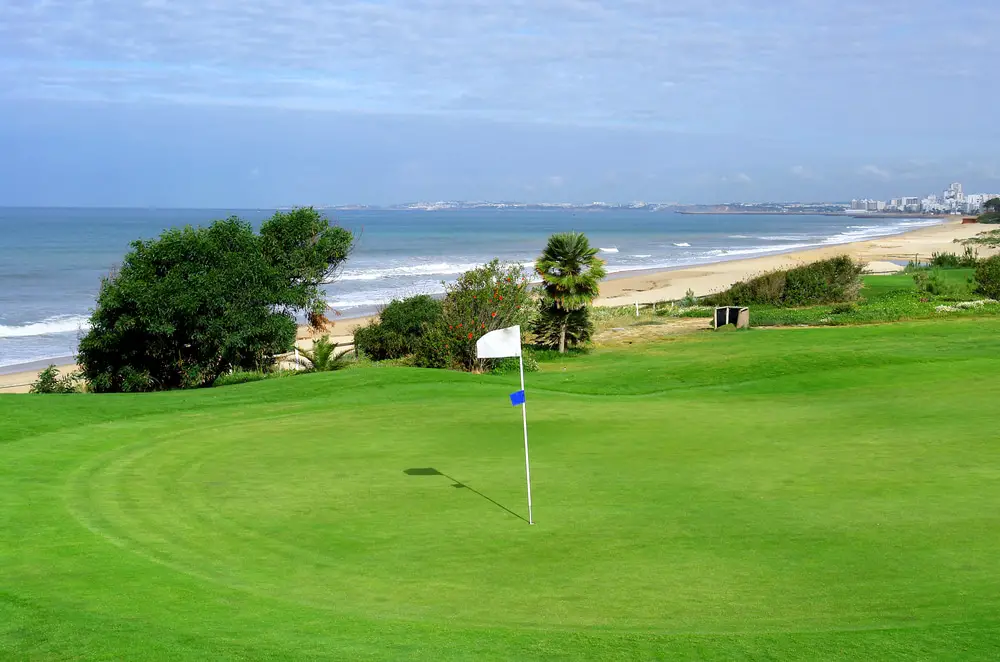Last Updated on October 17, 2023
Golf is one of the most popular sports in the world today, with millions of players from all walks of life taking part. This popularity has sparked significant interest in building more and more golf courses around the globe. As such, it’s interesting to explore the growth of international golf courses in recent years.
To get started on answering our original query – ‘How many golf courses are in the world?’ – let’s delve deeper into what we know about these courses and their impact on society. We’ll examine some key statistics as well as explore any trends or changes that have occurred over time.
Number of Golf Courses Globally
Estimating the number of golf courses globally is challenging. However, research has shown that there are over 44,000 worldwide. This includes both public and private golf courses, as well as those owned by resorts or country clubs. Golf course count varies greatly from nation to nation; while some countries may have only a few dozen courses, others boast hundreds – even thousands – of them.
The US leads the way with 15,372 global golf courses, according to 2018 figures. The UK follows close behind with 1,867 total golf courses for its population size. Canada has 877 registered golf courses within its borders, and China boasts 740 across their vast landmass. All in all, these three nations alone make up nearly 20% of the total global golf course count. It’s clear that golf is popular around the world and continues to be an important part of many cultures leisure activities and sports programs.
Different Types of Golf Courses
Golf courses come in various shapes and sizes, offering a variety of playing experiences. The most common types include links-style, parkland-style, desert-style, heathland-style, and mountain-style. Links-style courses are typically found near the shoreline and feature wide fairways with natural hazards such as sand bunkers and thick roughs. Parkland-style courses often have tree-lined fairways that require precise accuracy from players to reach the greens safely. Desert-style golf courses tend to be more open than other styles due to the lack of trees or water features; they also favour aggressive play due to their wide fairways but penalise wayward shots harshly. Heathland-style golf courses are characterised by rolling terrain and closely mown grasses throughout the course; these courses reward shot makers who can manage their distances accurately. Mountain-style golf courses offer spectacular views while incorporating rugged terrain – steep hillsides, deep valleys, creeks and streams – into their design; these types of courses provide an exciting challenge for experienced players.
Major Golf Course Locations
Golf is a popular sport worldwide, with courses located in some of the most iconic golfing destinations. In the United States alone, there are over 16,000 courses spread across all 50 states. The U.S., Canada and Mexico make up one of the largest concentrations of golf course nations on the planet. Europe also has an impressive array of golf course countries; Scotland has been particularly renowned for its historic links-style championship courses. Other regions like Australia and Asia have recently seen a surge in popularity for their own respective styles of golf courses.
The Middle East and Africa are two other major regions which offer unique experiences to those looking to play golf abroad. With year-round sunny weather and luxury resorts, these areas have become quite attractive to international players interested in testing themselves against challenging layouts found only here. No matter where you go, it’s easy to find a course suitable to your skill level – making it possible to enjoy a round or two no matter what part of the world you’re visiting.
Popularity of Golf Courses
The popularity of golf courses is undeniable. Golf has been a favourite sport all around the world for centuries, and it seems that more people are playing than ever before. The number of golf resorts, clubs, and courses around the globe continues to grow year after year. It’s estimated that there are over 50,000 golf courses worldwide.
Golf tourism is also on the rise, with millions of players travelling every year to visit some of these renowned courses. Not only do they get to experience beautiful scenery and challenging layouts, but many take advantage of services such as lessons from certified professionals or instruction at special training facilities. For those who wish to design their own course, there is always the option of hiring a professional designer and having one built according to your specifications; this also has become increasingly popular in recent years.
In addition to new builds, keeping existing courses up-to-date requires careful maintenance and repair work by qualified crews and equipment operators. Many golf clubs have employed full-time staff dedicated solely to maintaining their grounds – from irrigation systems to grass-cutting machines – ensuring each course remains balanced for both amateurs and pros alike. With so much attention given towards upkeep, it’s no wonder why these green spaces continue to be enjoyed by numerous individuals across the planet each day.
Private Vs Public Golf Courses

Golf courses come in a variety of shapes and sizes, with some being public or private. Public golf courses are typically owned by local governments or authorities and offer open access to the general public. These courses may be funded through taxes, fees, donations, or other sources of revenue. Private golf courses, on the other hand, are usually exclusive clubs that require memberships and sometimes have high membership fees associated with them.
Private golf courses tend to provide more amenities than their public counterparts; these can include areas such as driving ranges, pro shops, clubhouses, restaurants and even vacation rentals. However, they often restrict non-members from playing on the course itself unless invited by a member. Despite these restrictions though, many private golf courses still attract large crowds due to their quality of play and overall atmosphere. It is estimated that there are over 35,000 private and public golf courses around the world.
Environmental Impact of Courses
After discussing the differences between private and public golf courses, it is important to consider their environmental impact. Golf courses are often seen as a hazard to the environment due to their intensive maintenance requirements and use of water resources.
Here are some key points about the environmental impacts of golf courses around the world:
- Water usage – Many golf courses require extensive irrigation, which can be detrimental to local water supplies if not managed responsibly.
- Chemicals – Pesticides and fertilisers used on golf courses can contaminate nearby bodies of water or even seep into ground/drinking water sources.
- Habitat destruction – By removing large areas of natural habitat, golf courses may disrupt animal populations and reduce biodiversity in certain areas.
- Greenhouse gas emissions – Mowing grass and running machinery produces greenhouse gases that contribute to climate change.
Given the potential for serious damage, it is essential that all stakeholders involved with managing golf courses—including course owners, operators, government entities, and environmental organisations—work together to find ways to minimise their negative effects on nature while still allowing people to enjoy this beloved sport.
Conclusion
In conclusion, golf is an enjoyable and challenging sport that has a long history. It’s estimated that there are around 34,000 golf courses in the world; however, it is difficult to determine exact numbers due to a lack of accurate records. The average cost for playing at a course varies depending on region, but most courses charge between $20 and $50 per round. Estimates suggest over 60 million people play golf each year.
Safety protocols should always be followed when playing golf; these regulations vary from country to country. As far as we know, the oldest surviving golf course is Musselburgh Links Golf Course in East Lothian, Scotland which dates back to 1672. Additionally, some modern-day courses offer night-golfing services with LED lighting and other amenities – making it possible to play under the stars.
Playing golf offers an enjoyable way to connect with nature and spend quality time with friends and family. All players should ensure they abide by safety regulations and follow proper etiquette during their rounds for maximum enjoyment. Explore the world of golf courses and enjoy your next game.



